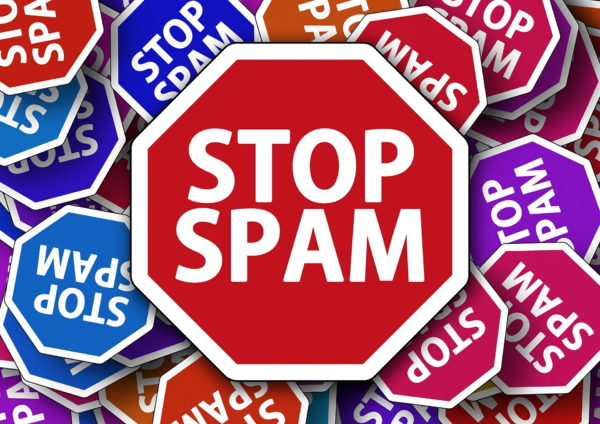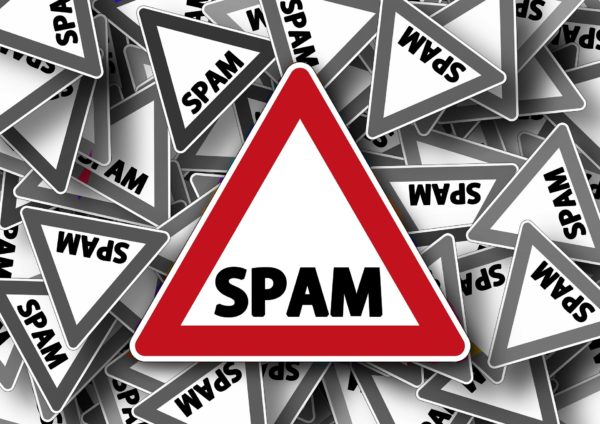The A-Z Of Anti-Spam Legislation

Anti-spam legislation is an important part of running a business’ email marketing campaign. There is a lot to consider to ensure you’re compliant with laws across the world. So, here is a quick A to Z of anti-spam legislation to help you understand laws to ensure you’re compliant.
A – Anti-spam laws
There are numerous laws across the world. Many of them have the same legal obligations, such as senders have to ensure recipients have opted into receiving messages and can unsubscribe from your list at any time.
B – Business
Many laws differentiate between the consumer and business. For instance, you can send businesses unsolicited emails unless there is any personal information in the email or they are a sole trader/partnership.
C – CAN-SPAM laws
The Canadian laws that specify what can and cannot be sent in email campaigns and is considered spam. These are some of the strictest laws in the world, and are therefore one of the best to follow.
D – Double Opt-In
This is a process where the user has to confirm their opt-in decision by confirming their subscription to your list via an email.
E- E-mail
Spam laws are often specific to email marketing campaigns but there is no definition of what is a campaign. A single email can be defined as a campaign. That is why legislation often states that punishments are done on a per-email basis not a per campaign basis.
F – Fines
Many countries will fine your business should you break the anti-spam laws. Most fines are done on a per recipient basis not on a per campaign basis.
G – GDPR
An EU law that determines what data can be collected and saved by a business. EU laws don’t just affect EU businesses, if you have traffic or subscribers from the EU, then you must follow the rules.
H – HTML
All emails are tested for spam content. You need to be sure that your emails code (HTML) passes these tests to ensure deliverability.
I – Included Content
When asking for permission to contact subscribers, you need to be specific in what you’re asking to contact them about. If you request permission to send them weekly updates from your blog and then send them a marketing message about a service, you can be fined as they didn’t opt into this content.
J – Judge
Most countries have an organisation that judges whether a company has broken anti-spam laws. They will investigate infractions and deal out punishments.
K – Kill
Failing to comply with anti-spam laws can be very expensive and can kill your business off financially. It is more cost effective to build your mailing list with white hat techniques.
L – Laws
Many small business owners think that Spam laws are just suggestions, but they are laws. Some countries will imprison repeat offenders.
M – Mailing Lists
Many laws subversively ban bought mailing lists because the subscribers haven’t specifically opted into your marketing content.
N – No Third Party Exemption
If you have obtained the data from a third party, that doesn’t make the third party responsible. It is the sender of the email campaign to ensure that all recipients have agreed to the contact. Therefore, if you’re sending content to a partner’s list, it’s best if the partner sends the message from their own brand rather than give you the list to send.
O – Omission (Unsubscribe)
According to anti-spam laws, when a subscriber requests that their name is removed from your mailing list, this should be done so within a reasonable amount of time. With today’s technology, that normally means within one working day.
P – Personal Data
Personal data is any information that can identify someone. Laws state that all personal data kept must be relevant and necessary for business purposes. Therefore, if you don’t need a physical address, you shouldn’t keep it.
Q – Quarantine
To ensure that you are compliant with all anti-spam laws across the world, you should run a double opt-in campaign. Until you’ve received confirmation, you should quarantine all new subscribers.
R – Recipient
The recipient is classed as the person who the message is intended for. You should send emails to recipients who have subscribed to your mailing list and not send a message for someone via another email account.
S – Spam
Spam is considered any communication that is unwanted by the recipient and is used to sell products/services.
T – Traffic
It is estimated that as much as half of all emails sent today are spam messages. By reducing the amount of spam sent, the experience of everyone on the internet can be improved.
U – Undeliverable
While laws don’t affect deliverability of your campaigns, by sending spam too often, your mail server can be blocked from sending emails by other servers. This blacklisting makes it less effective for you to earn revenue from email campaigns.
V – Viruses
Spam is often associated with viruses, with many campaigns linking into sites that download malware. If you send spam, you will be associated with these campaigns.
W – Worldwide
Many anti-spam laws cross borders and you have to ensure that your email marketing campaigns follow the relevant regulations.
X – ‘X’pert
At times it can be necessary to consult an expert if you have any doubts over whether you are adhering to correct legislation or not.
Y – Your Responsibility
Whether you use online software or just your own server, it is your responsibility to comply with the laws. You should also make sure that any third party company sending mails out in your name are following anti-spam laws.
Z – Zzz
Don’t fall asleep; in other words, don’t get complacent. With any type of legislation you need to make sure you stay up-to-date with changes. They regularly happen.
Conclusion
There is a lot to think about when complying with anti-spam laws. The A-Z above, is a quick guide to some of the aspects you might not know about. You can look at some of the other articles we have in relation to spam here.
How do you ensure you’re complying with anti-spam laws? What could you do better?
Let us know in the comments below.
Read post Post a Comment. Tagged in: anti spam, email laws, spam email
4 Reasons You Need To Avoid Spam Filters

Spam is prevalent across the world with more than half of all mail being counted as spam.Spam filters are an email marketer’s worst nightmare. Bounces are fairly easy to deal with by removing the bad subscriber from your list. However, you are often left unaware that your important communications are being placed inside spam folders because of a mailbox’s filters.
There are many reasons why this is bad for your business. Here are numerous reasons why you need to avoid Spam filters.
1. It Lowers Your Open Rate
The first, and most obvious, impact of your emails landing in your list’s spam folder is that it will lower your email’s open rate. Too few people check their spam folders. This does have significant consequences for customers, as too many important emails are often mistakenly sent to the spam folder. However, it also lowers your open rate, and that can make it harder for you to communicate important messages.
A lower open rate also damages the reputation of your list and can make it hard to justify your email marketing campaigns. Finally, your email marketing ROI will be much lower if people aren’t reading your emails.
2. It Damages Your Reputation
Your mail being sent to spam folders does mean that your mail’s servers get a bad reputation. Whether this is from the incoming server or the fact that seeing your mail in the spam filter automatically damages your reputation with subscribers is not important, your mail being in the spam folder is damaging to your reputation.
A damaged reputation is a sure way for your subscribers to not buy from you in the future. And some filters share information, so your mail continuously being picked up by spam filters means that your mail is being sent to one folder, and can sometimes mean others in the future will send your mail to spam filters. This is especially true if people use the same servers such as gmail, hotmail, etc..
3. Costs Increase, Revenues Fall
In order for you to avoid spam filters, once you’ve been caught in their trap, you have to spend lots of money to solve the problem. For instance, you might need to invest in new mail servers or new templates for your emails. You might also need to contact consultants who can help you improve your reputation.
At the same time, as less people are reading your emails, fewer people will be visiting your website and your revenue will drop. That means that email marketing, that usually has the best ROI in the digital marketing industry, isn’t offering the returns that you should expect.
4. Your List Will Get Smaller
If you follow best practices, at some point you’ll clean your list. This should be done every two to three months. If someone doesn’t open an email for three months, because your mail has been placed in their spam folder, you will most likely remove them.
For some people, this won’t be a great loss. They no longer want to subscribe to your mail and want to move on. However, some people are probably great leads for your business and losing a section of your list because your mail is sent to the spam folder is a huge loss. In addition, as you lose people on your mailing list, the potential revenue from your email marketing gets lower.
Finally, losing people on a list means you have to find new subscribers. However, their lifespan on your list could be cut short because your mail is caught by their spam filters. It’s an endless cycle that needs to be broken for you to realise the potential revenues from email marketing.
Conclusion
Being caught in an email spam filter is not good news. It is expensive to resolve and can cause significant long term damage to your business’ reputation. So, the best thing to do is to stop your emails from being caught in the spam trap and follow the best practices.
What tips do you have for avoiding the spam filter? Have you resolved this issue?
Let us know in the comments below.
Image by AndyPandy from Pixabay
Read post Post a Comment. Tagged in: ant-spam, email marketing campaigns, email marketing strategy, spam email, spam folder